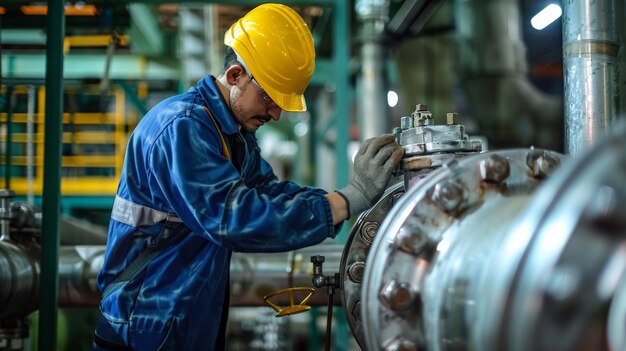The Role of Valves in Modern Systems
Valves play a crucial role in industrial and sanitation systems, acting as control mechanisms to regulate the flow of liquids, gases, and other substances. Whether in manufacturing plants, water treatment facilities, or sanitation networks, valves are foundational to maintaining efficiency, safety, and reliability. Through advancements in valve technology, industries have been able to integrate sophisticated systems that meet evolving demands without compromising on functionality.
Optimizing Efficiency With Advanced Valve Technology
Efficiency is at the heart of any industrial or sanitation system. Modern valves are designed to maximize performance by reducing energy usage and minimizing waste. For instance, automated valves have transformed processes by providing precise, real-time control that adjusts to system requirements. This eliminates the risks associated with overflows, leakages, or inefficiencies.
By integrating smarter operation methodologies, industries ensure that resources are utilized effectively. Whether it’s monitoring fluid dynamics or controlling pressure levels, advanced valve solutions support seamless operation. Features such as adjustable flow rates or remote monitoring improve workflow and resource allocation.
Reliability in Industrial and Sanitation Applications
Reliability is non-negotiable, particularly in sanitation systems where consistent performance directly impacts public health. Industrial valves ensure that production lines run seamlessly without disruptions. They safeguard against failures that could cause downtime, equipment damage, or safety hazards.
Materials used to construct modern valves have also improved significantly. From corrosion-resistant compounds to high-strength alloys, these innovations make valves more durable and better suited to withstand varying conditions. Reliable valve performance is critical when dealing with high-temperature settings, corrosive environments, or high-pressure systems in industries such as chemical manufacturing or wastewater management.
Flexibility and Adaptability in System Design
The versatility of valve solutions today allows them to seamlessly integrate into diverse applications. Modern engineering prioritizes adaptability so valves can meet unique system requirements. This is especially relevant in sanitation systems where demand and flow rates vary widely throughout the day.
Take the integration of specialized valves, like a pressure regulator valve, for instance. These assist in maintaining optimal pressure levels by adapting to fluctuating system demands, ensuring consistent performance. Such innovations make it easier for industries to customize systems that meet operational needs without compromising efficiency — a necessity in fields like energy production and water distribution.
Reducing Environmental Impact
The global push toward sustainability has pushed industries to adopt greener practices, and valves play a key role in achieving this goal. Smart valve technologies aid in resource conservation by promoting precision in fluid handling. This ensures minimal waste from water purification, oil extraction, or chemical storage.
Additionally, valves designed to prevent leaks or emissions help reduce environmental contamination. Whether it’s containing hazardous materials or ensuring smooth wastewater treatment, advanced valves make operations less harmful to the planet. Industries can now meet environmental regulations more effectively while boosting operational efficiency.
Enhancing Maintenance and Longevity
Maintenance has always been a challenge in valve-based systems. Traditional valves often require manual inspection and frequent replacement to avoid failures. However, modern valve solutions prioritize durability and easy maintenance. Components are now designed for longer lifespans and reduced downtime.
Innovative self-cleaning mechanisms, for instance, protect valve interiors from debris or sediment buildup. Automation further streamlines maintenance by allowing remote diagnostics and adjustments. This approach limits the frequency of manual interventions while ensuring continued reliability.
Supporting Seamless Integration
Industrial and sanitation systems thrive on integration. Each component must function harmoniously with others to achieve seamless operation. Valves today are designed with interoperability in mind, allowing them to work alongside sensors, controllers, and software platforms.
For example, valves integrated into smart systems can communicate with central monitoring units, allowing technicians to optimize performance remotely. This interconnectedness not only simplifies system management but also enhances scalability, making it easier for industries to expand their operations without overhauling existing systems.
The Future of Valve Technology
The evolution of valve solutions suggests exciting future possibilities. With the growing influence of automation, smarter valve systems are likely to incorporate artificial intelligence to further optimize performance. Predictive maintenance, enhanced precision, and energy savings are just the tip of the iceberg.
Industries are also looking toward environmentally friendly materials and designs that align with sustainability goals. Biodegradable coatings or hybrid valve systems could revolutionize sanitation systems, particularly in resource-scarce regions. This progress will make industrial and sanitation integration more efficient and adaptable than ever before.
A Seamless Partnership for Progress
Valve technologies are the backbone of industries and sanitation networks, ensuring systems operate efficiently, reliably, and sustainably. With continuous innovation, these solutions are increasingly adaptable to the demands of modern industrial challenges. Whether regulating flow or ensuring system integration, valves are indispensable tools for optimizing performance and meeting the needs of future systems.








Leave a Reply